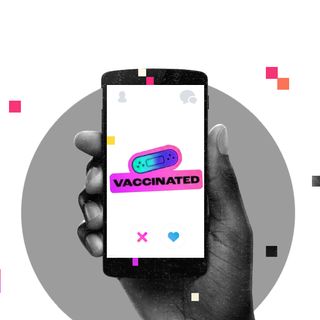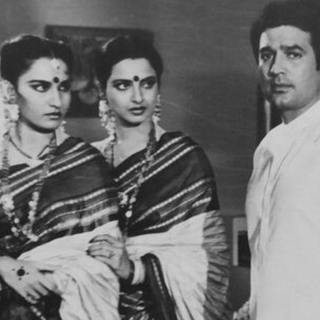
Lifestyle Brands Are Showcasing Their Humanitarianism, Blending Activism and Retail
This moment in advertising that combines politics, sentiment, charity, and retail is new.

Olio Stories recently sent out an email with the subject, “TBH: We’re not in the mood to sell” — a refreshing way to capitalize upon privileged malaise in the Covid19 pandemic. Only halfway down the page do they remind you of their new jewelry collection, now shipping worldwide.
The intersection of emotion and retail in marketing is not new. However, in the last few years, consumer brand language has been marked with a distinct, Instagrammable humanitarianism — a trend that has only heightened in the Covid19 crisis.
An article in the Harvard Business Review advising businesses on how to market during a pandemic reads: “People will remember brands for their acts of good in a time of crisis … Feel-good content that alleviates anxiety and promotes positive messaging will go a long way to enhancing the brand. However, companies need to show that their contributions are material and not solely for commercial benefit.”
Founders of brands are feeling this pressure too. Recently, the owner of a well-known fashion brand, who is also a friend, revealed something complex: she felt like she had to do something for the crisis. “I don’t want people to think that all we do is sell fancy clothes,” she said. Humanitarianism had to extend to the product. Plus, she said, a little cautiously, her Insta grid was beginning to look “a little insensitive.” There was a real fear that she’d begin to lose customers because of a perceived apolitical insensitivity that would translate to both un-coolness and immorality.
Brand storytellers like myself have also had to quickly adapt to this new era. When we create content now, we know that communication can not be purely product-focused; it must also speak to what the anthropologist Arvind Rajagopal called “the sentimental education of the consumer.”
Further, brands know to not just position the consumer as someone who likes change but as someone who has a hand in it too, be it a crisis in Bihar or Lebanon. No matter how removed the socio-political context, words like “community” and “collaboration” become key tools.
These friendly, community-forging words are blatantly baked into retail. And for consumers, this humanitarian lifestyle messaging is hard to resist, even as it preys upon the dissonance most of us are currently experiencing. At the moment, many of us are leading highly atomized, if not outright lonely existences. Yet, posts that play on hyper-connectivity — imagined or real — fetch thousands of likes.
This is perhaps because the relationship brands propose can often feel like the intimate friendships that are currently scarce and greatly missed. Many urge you to buy a product, promising to match your purchase amount in a donation, playing on the amity grammar of give and take.
Related on The Swaddle:
Tell Me More: Talking Inequality in Sustainable Fashion Aesthetics With Meher Varma
Brands are getting better and better at this kind of moral capitalism, using their profits to consciously donate (organizations like Hemkunt Foundation and Khalsa Aid are favorites). But in doing so, they never compromise on assuring you — the urban privileged consumer — that you are not the victim, i.e., the one who may be in need of aid. The language of donation is never drab or out of sync with millennial speak: you are urged to join a brand’s “fam” or “tribe” and, through your shopping carts, you can “show up” for the nation in the way that one would show up for a party. Sometimes, the lingo is so good that we forget that this generosity is mediated by retail. We also forget that the language and marketing reinforce class barriers in the large universe of consumption: it is unlikely that anyone who receives our aid would use words like fam or tribe.
This moment in advertising that combines politics, sentiment, charity, and retail is new, but also connected to a history of emotional branding. As a cultural anthropologist, tracking the cultural impacts of this shift has been fascinating.
In the 1990s, to perhaps enforce a feeling of freedom — fueled by economic liberalization — many fashion ads were sweaty and salubrious. To promote their textiles, for example, Bombay Dyeing featured semi-clad couples wrapped in a single piece of cloth. But despite the breathless intimacy, the distance between the consumer’s life and the brand was clear.
Then, with the introduction of Instagram in India in 2010, ads adapted to a new way of viewing and seeing. To seamlessly fit into people’s feeds — between selfies and videos of their friends — relatability became key. Along with sexy sellable things, storytellers like myself began crafting a brand tone that resembled the imagined friend of the upper middle-class, liberal shopper. The “real” things “real” people do (“lifestyle,” it’s called) — like make simple 15-minute dinners for their families and convert their saris into pillow cases — must take up as much digital real estate as the product. And, in times of heightened political unrest, brands must project “woke-ness” in order to remain relevant. Today, it’s far from strange to find an #standwithpalestine story between two ads for new dresses on a brand’s social media page. It is the algorithm of retail cool.
Now, the universe that presents itself in front of the relentlessly scrolling consumer is massive, borderless and infinite. Your purchase (which could help anyone between four and four thousand miles away from you) becomes the broker between your wallet and heart, consumer and community.
It is easy to ask why any of this is problematic: a kind of “in the context of capitalism, it’s better-to-do-something than nothing at all.” But this is not an attempt to pass judgement on whether or not brands should give and how much. It is, instead, an observation that humanitarianism has neatly intertwined itself with retail, leading to a distinct era of Instagrammable lifestyle humanitarianism.
This is a moment that, while democratic in its language, reinforces the identity of the privileged consumer. The upper middle-class shopper of goods can now not only look good but also feel good, as digitized activism and shopping seamlessly come together.
Meher Varma is a cultural anthropologist, brand storyteller, and writer. You can find more of her work on mehervarma.com and @agramofmeher.
Related


Why Do Heist Shows, Movies Appeal To Us?
